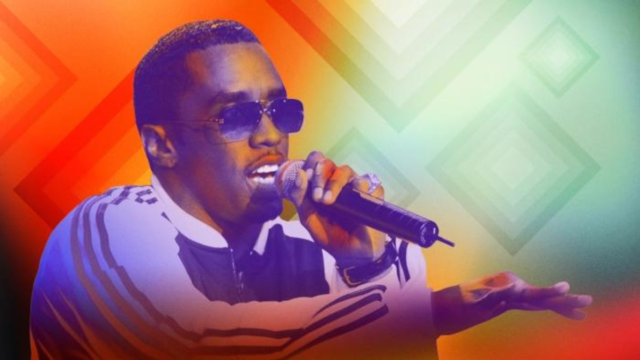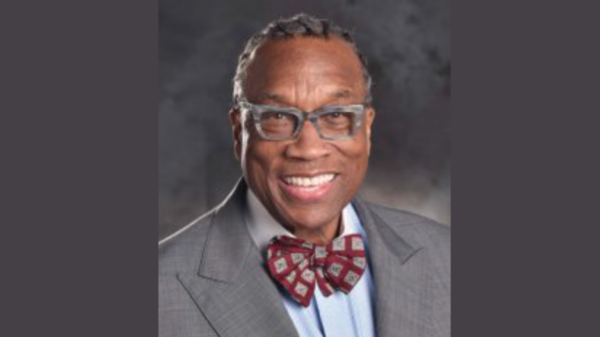
By Keith Murphy
Sean Combs hated it. The Howard University dropout and charismatic party promoter-turned-Uptown Records executive was overseeing a recording session for the newly crowned queen of hip-hop soul Mary J. Blige. The track in question was a remix of his protégé’s fourth single, “Love No Limit,” from her 1992 landmark debut, What’s The 411?
“That’s not it,” said the then-24-year-old producer who was becoming more frequently known as Puff Daddy.
These days the kids know Combs as the jet-setting mogul painting the world red with 28-year-old rapper Yung Miami of the City Girls and seemingly competing with TV host Nick Cannon to repopulate the world in his own image. But back then, he was striving to become the king of the remix, and he wouldn’t settle for anything less than perfection.
“Now I’m mad,” recalled Glenn K. Bolton. Known in the music world as Daddy-O, Bolton was one of the founders of rap’s first hip-hop band, Stetsasonic, and co-produced the track with Combs. He had initially built Blige’s “Love No Limit” remix around a replayed portion of the Gap Band’s “Outstanding” from 1982.
“That’s when I grabbed Keni Burke’s ‘Risin’ to the Top,’ ” Bolton said. “And Puff says, ‘That’s it!’ I tried to tell him that the song had already been sampled a bunch of times, but Puff was like, ‘I don’t give a f—. We using that one.’ ”
Combs, who would single-handedly remake the standard remix in his own audacious, can’t-stop-won’t-stop image, wasn’t done. During the session, Blige’s then-boyfriend and Jodeci vocalist K-Ci Hailey and Dave Tolliver of Men at Large were riffing on the chorus in the background. Combs promptly directed them to go into the recording booth.
“Now I want you to resing the entire song,” Combs instructed Blige, giving “Love No Limit” a looser, strutting arrangement. “It worked,” Bolton said.
Before Combs was famously fired by mentor and Uptown head Andre Harrell; before he founded Bad Boy Records in 1993, introducing the world to the Notorious B.I.G., and the so-called East Coast versus West Coast rap war tragically claimed the lives of two former friends; before Combs and Bad Boy ascended from the ashes, eventually selling more than 400 million records; before the name changes, his triumphant turn to fashion and his reinvention as a liquor-brand savant; before Combs established his own cable TV network and reached billionaire status — he just wanted to make everybody dance.
Combs’ weapon of choice was the remix, a tool he had earlier used in 1992 for an EPMD-inspired flip of Jodeci’s “Come and Talk to Me.” The following year Combs masterminded a hip-hop-infused version of dancehall reggae artist Super Cat’s frisky “Dolly My Baby.” Blige and a then-unknown Notorious B.I.G. were among the featured players. But it was their inspired pairing on the Combs/Daddy-O collaborative remix of her 1992 hit “Real Love” that was a revelation.
Inspired by the R&B and hip-hop blends of Harlem’s DJ Ron G (who introduces Blige on the track), the Combs-directed reimagining of “Real Love” became the centerpiece of Blige’s influential What’s The 411? Remix album. “Look up in the sky it’s a bird, it’s a plane, nope, it’s Mary J, ain’t a damn thing changed,” Notorious B.I.G. proclaimed on an upbeat track that combined the bluesy guitar riff from Betty Wright’s “Clean Up Woman,” a sampled drum break from Lafayette Afro Rock Band’s obscure 1973 composition “Hihache,” and embellishments from Uptown’s session keyboardist Avon Marshall.
By 1995, the Notorious B.I.G. was a superstar. His Bad Boy debut Ready To Die had already sold more than 2 million copies and Combs was looking to run up the score on the heels of Craig Mack’s “Flava in Ya Ear” remix produced by Easy Mo Bee. (Notorious B.I.G. was the standout on the posse cut that also featured LL Cool J and Busta Rhymes.). But there was one problem. The Notorious B.I.G.’s next single, “One More Chance,” was wildly explicit.
For Combs there was little margin for error. This was hip-hop’s second golden era, when celebrated producers such as Pete Rock (Public Enemy’s “Shut ’Em Down”), Q-Tip (Nas’ “The World Is Yours”), Organized Noize (OutKast’s “Player’s Ball”), RZA (Method Man and Mary J. Blige’s “All I Need”) and Dr. Dre (2Pac’s “California Love”) were cranking out remixes that were as good and often better than the original.
Combs got to work. He tapped Rashad Smith, a member of Bad Boy’s storied production team The Hitmen, which included Deric “D-Dot” Angelettie, Carlos Broady, Nashiem Myrick, Ron “Amen-Ra” Lawrence, Mario Winans, and Stevie J, to deliver an addictive loop lifted from DeBarge’s 1983 deep album cut “Stay With Me.” Combs then orchestrated Notorious B.I.G.’s laid-back, playboy flow, adding background vocals from Wallace’s wife and Bad Boy artist Faith Evans and the ever-present Blige.
The “One More Chance” remix instantly became another platinum-seller for the Notorious B.I.G. Yet while Combs’ commercial-or-bust mantra often made him an easy target for hip-hop purists, Jermaine Hall, who has written extensively about Bad Boy’s blazing run, said Combs was being guided by a more personal motive. Combs was a product of the 1980s and early 1990s when rap still took a back seat to R&B on playlists, immortalized on Ice Cube’s fiery 1990 middle finger “Turn Off the Radio.”
“Back then, hip-hop was largely relegated to late-night mix shows,” said Hall, a former music journalist and current CEO and founder of LEVEL, a culture publication aimed at Black men. “The songs that we loved were just not in regular rotation on the radio the way that they are now. Puff’s mentality, even pre-Bad Boy, was that the music that I’m going to make is intended for a mass audience. And no one is going to tell me that you can only hear my music at 11 p.m. or later.”
Besides, Combs was too busy rewriting the rules. From the Nashiem Myrick co-produced 112 remix of “Only You,” featuring an in-his-prime Notorious B.I.G. and a newly signed Ma$e to the Puff Daddy/D-Dot-arranged 1997 all-star “It’s All About the Benjamins,” Combs’ retouches became the standard for producers looking to move the crowd.
“We had a knack for that,” said Myrick of the mystique that elevated the Bad Boy remix. “I didn’t even realize what we were doing at the time. I guess working under Puff you get that way. (Laughs.) You never got too overzealous about your work around him.”
But while Combs had final say over his productions, he was well aware that the Bad Boy sound was only as dynamic as the collective. “The Hitmen believed in me and my leadership, so you had that cohesive sound. So it’s coming from one brain; our collective brain,” Combs explained on Netflix’s docuseries Hip-Hop Evolution.
Yet, contrary to the title of his platinum 2002 compilation album, Combs and crew did not invent the remix. It originated in the late 1960s in Jamaica, where reggae and dub producers would take out vocals and instrumental parts to create updated “versions” of songs for MCs to toast lyrics over. Meanwhile, at New York’s Fire Island, DJ Tom Moulton was trying to figure out a way to extend the length of a song to keep revelers on the dance floor. He started using a razor blade to cut up audiotape to create longer songs, essentially forming the template for the modern-day remix.
The mainstream rise of disco, first innovated in NYC’s underground gay club scene by Black and Latino spinners, ushered in the release of Double Exposure’s 1976 game changer “Ten Percent,” the first commercially available 12-inch single, constructed by DJ Walter Gibbons. By the 1980s and early 1990s, the remix had become ubiquitous, from the 1984 Jocelyn Brown jam “Somebody Else’s Guy” to Teddy Riley’s 1993 “Human Nature” remix of SWV’s “Right Here.”
But it was amid the innovations by house music DJs and the zenith of rap’s sampling explosion that the remix truly came of age. The game-changing reel-to-reel tape editing of dance music giant Frankie Knuckles planted the seeds for the ubiquitous “house remix” as A-listers such as Madonna, Michael Jackson, Prince, and Whitney Houston began commissioning sweat-inducing dance club songs. Soon everyone from alternative pop duo Everything but the Girl to piano rocker Tori Amos were using remixes to broaden their reach. By the late 1980s, hip-hop giants such as Boogie Down Productions, De La Soul, LL Cool J, A Tribe Called Quest, and Salt-N-Pepa began releasing rearranged classics. Combs was soaking it all in.
Still, the recording industry largely viewed the remix as a tool to extend the life of a single in the marketplace for another four or five weeks. “Puff wasn’t interested in that,” said Bolton. “He was going after that young, ’90s New York club feel. Puff wanted his songs to be played at places like the Tunnel, where all the hustlers would be. He would say, ‘Yo, if we are being played there, we are doing something right!’ ”
And the supercompetitive Combs was more than willing to spread the love outside his crew. When pop star Mariah Carey rebelled against the machine and pushed for a more street-sounding vibe, Combs pulled off music’s most unlikely team, adding Wu-Tang Clan wild man Ol’ Dirty Bastard to the track for a funky “Genius of Love”-propelled remix of “Fantasy.”
“I laid down the track and put a little twist on it by changing the pitch,” said Myrick, who was assigned to transform “Fantasy.” “It was a straight sample of the Tom Tom Club. And then Puff came up with the idea to bring ODB on the remix. That’s his genius. You have to understand when Puff works with people, he’s like LeBron [James]. He makes everyone around him better. People want to be at their best ability when they are working with Puff, whether it’s Mariah or ODB.”
The implausible union scored Carey her ninth No. 1 single and the first by a female artist to debut atop the Billboard Hot 100. More than two decades later, the enduring 1981 “Genius of Love” sample would fuel Atlanta rapper Latto’s breakthrough top three Billboard Hot 100 hit “Big Energy” in April and Carey even joined her on the remix.
In 1996, Combs transformed Gina Thompson’s sluggish “The Things That You Do” into a dance floor favorite, complete with a Bob James “Take Me to the Mardi Gras” sample and an otherworldly appearance by Missy Elliott. That same year, hip-hop’s Supa Dupa Fly game changer appeared on another Combs remix for rapper MC Lyte’s “Cold Rock a Party.”
“Puffy was trying to explain to Sylvia Rhone [then CEO of Elektra Entertainment Group] why every mix for every type of club had to be done,” Lyte told me in 2011 for a Vibe retrospective of her career. “When I got to the studio, Missy was there. She had already laid down her verse, the harmonies and the hook. She’s just like Puffy. They get the bigger picture in terms of the track. ‘Cold Rock a Party’ sold 2.5 million records internationally, which was the most for me. I think I did 1.5 million with ‘Keep on Keepin’ On’ before that. But with ‘Cold Rock … ’ that was another dimension.”
Combs was bigger than ever, emboldened by his 1996 album No Way Out, which has sold more than 7 million copies in the U.S. But there was a backlash. When Combs remixed and rapped on the revered KRS-One’s enthralling 1997 ode to hip-hop “Step Into a World,” critics and longtime followers of the Blastmaster responded to the tepid rendering with pitchforks. The raw club element that was so essential to the success of his earlier remixes had taken a back seat to a more listless, cookie-cutter approach. Combs returned to form with the 2002 remix of G-Dep’s “Special Delivery,” which attempted to recapture the vibe of the “Flavor In Your Ear” remix.
Today the power of the remix has dramatically waned, a victim of the TikTok age. Instead of creating new beats for remixes, artists simply ask others to hop on tracks. But Combs, now 53, isn’t ready to dance off gently into that good night. In the remix video for his latest single “Gotta Move On,” he’s still the proverbial life of the party. But the receipts are there for anyone who wants to understand why Combs remains the king of the remix.
“I hear people say that Puffy is not a real producer,” Bolton said. “Yeah, Puff has some f—ed up things about him, but his ear for production … he was born with it. There’s no musical training there. Puff didn’t do a remix just to say it was a damn remix. Sonically he knew at the end of the day those Bad Boy records were going to sound better than anything else in the club.”
Keith “Murph” Murphy is a senior editor at VIBE Magazine and frequent contributor at Billboard, AOL, and CBS Local. The veteran journalist has appeared on CNN, FOX News and A&E Biography and is also the author of the men’s lifestyle book “Manifest XO.”









